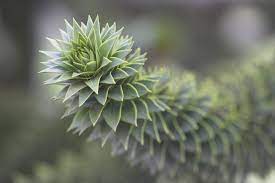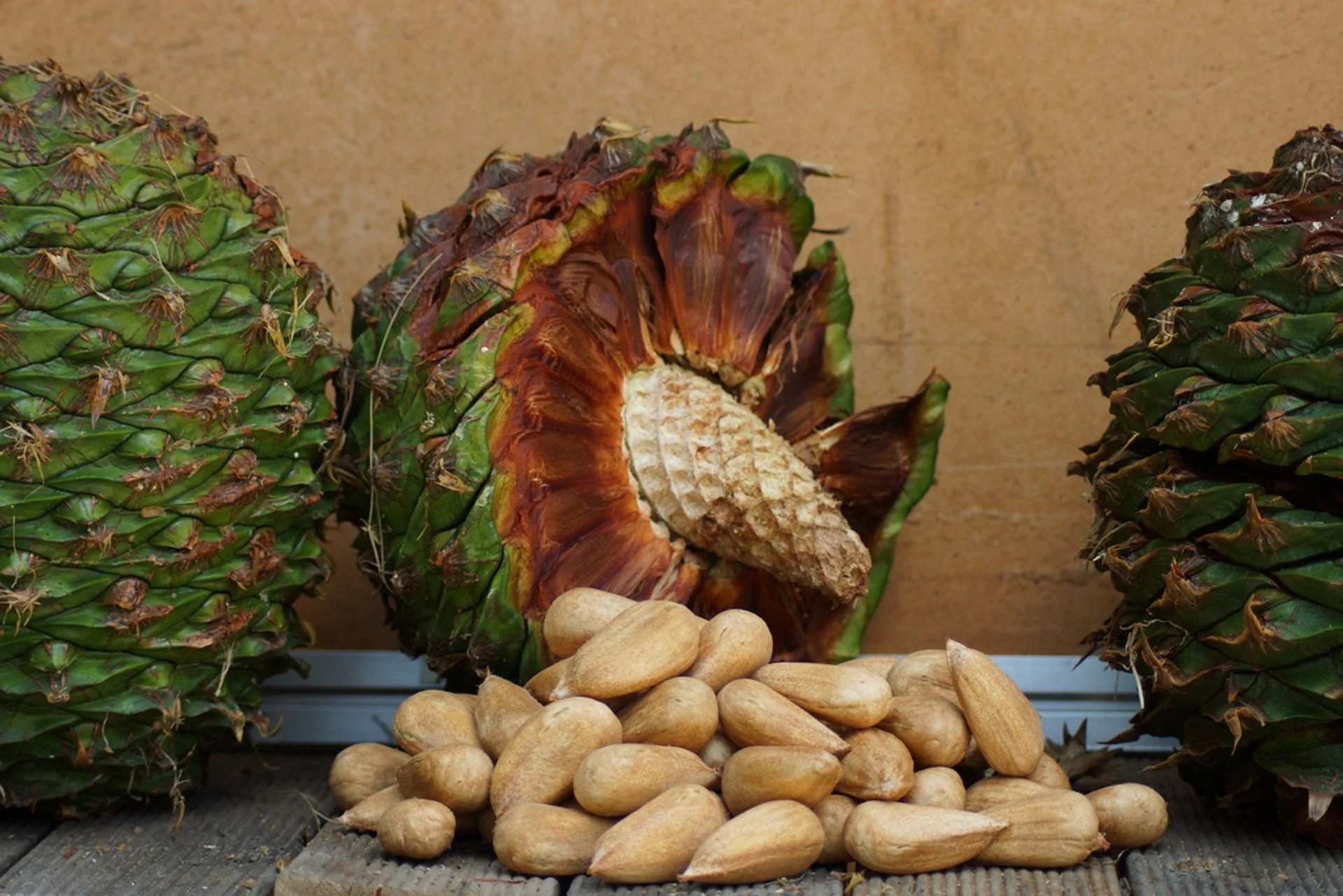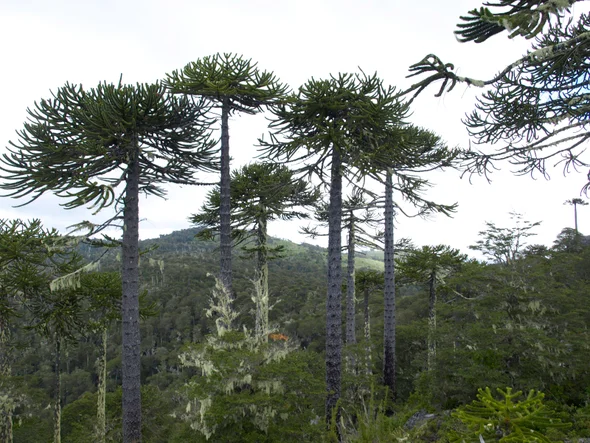Why are Monkey Puzzle Trees Called Monkey Puzzle Trees?
- Ben Mullen
- Apr 11, 2023
- 6 min read
Because even Monkeys would puzzle how to climb them!
There are plenty of examples across Munster of appallingly pruned Monkey Puzzles. It was one of the reasons we decided to write this blog.
Find out some fascinating facts about these ancient trees, and how we can look after them… properly!

Stunning Monkey Puzzles at Glanmore Castle, County Wicklow
(Photos curtesy of Monkey Puzzle Trees of Ireland Group 2023)
< https://www.facebook.com/Monkeypuzzletreesofireland>
Monkey puzzle trees, also known as Araucaria araucana, are an ancient and unique tree species that have captured the attention of botanists, horticulturists, and nature enthusiasts for centuries.
Amazing Monkey Puzzles! 3 Interesting Facts:
Appearance: Monkey puzzle trees are known for their distinctive appearance, with long, spiky leaves arranged in whorls around the branches. The trees can grow up to 100 feet tall and have a cone-shaped crown that tapers towards the top. The cones, which can be up to 8 inches long, contain edible seeds that are a traditional food source for local people in the Andes.
Monkey Puzzle cones with edible seeds- they can be boiled, roasted or snacked on like nuts.
(Google images)
Age: Monkey Puzzles are one of our most ancient trees! They were around during dinosaur times, and a well documented popular food source for the brachiosaurus! Monkey puzzle trees are long-lived evergreen trees that can live for several hundred years or more in their natural habitat. Some of the oldest known specimens are believed to be over 1,000 years old. The slow growth rate of monkey puzzle trees is due in part to their adaptation to high altitude environments, where resources are scarce and growing conditions are challenging. The lifespan of a monkey puzzle tree can vary depending on factors such as climate, soil conditions, and disease.

It is thought that Monkey Puzzles developed their hard spiny leaves and habit of losing their lower branches- to develop an umbrella-shaped canopy- in order to avoid being eaten by dinosaurs!
(Google images)
Habitat: Monkey puzzle trees are found in a relatively small geographic range in South America, including Chile and Argentina. They grow at elevations between 3,000 and 6,500 feet, where they are able to withstand harsh winters and strong winds- so ideal for Ireland too! The trees are an important habitat for a variety of other animals, including birds, insects, and small mammals such as rodents.
Monkey Puzzle trees can withstand cold temperatures but they may suffer damage if exposed to prolonged freezing conditions. They are also able to tolerate high levels of wind and rainfall, but may be susceptible to toppling or root damage if high winds or heavy rainfall persist.
(Google images)
Do Monkeys Live in Monkey Puzzles!?
Despite their name, monkeys do not typically live in monkey puzzle trees. Monkey puzzle trees are native to the Andes Mountains, while most monkeys are found in tropical rainforests in Central and South America, Africa, and Asia. While it is possible that some monkeys may occasionally climb or rest on monkey puzzle trees, they are not known to use them as a primary habitat.
So How can we look after these Ancient Beauties!?
Even though they don’t look like normal trees, they still need to be looked after like normal trees!
Pruning: How to, Why to and When to
Pruning is a necessary part of tree maintenance that can provide several benefits for monkey puzzle trees. Some of the most significant advantages include:
Improving tree health
Controlling growth
Enhancing appearance
Promoting fruiting
When pruning monkey puzzle trees, it is essential to use the correct techniques to avoid damaging the tree. Here are some tips to help you prune your monkey puzzle tree successfully:
Start young: Pruning is easier and less stressful for the tree when it is done at a young age. If you have a young monkey puzzle tree, start pruning it regularly to promote healthy growth and prevent the tree from becoming too large.
Remove dead or diseased branches: Begin by removing any dead or diseased branches. This will help improve tree health and prevent the spread of disease.
Prune for shape: Use pruning shears or a pruning saw to shape the tree. Start by removing any branches that are growing in the wrong direction or crossing over other branches. Then, trim the top of the tree to promote lateral growth.
Don't over-prune: Avoid removing too much of the tree at one time, as this can stress the tree and cause it to become weak or diseased. Instead, prune a little at a time and monitor the tree's response.

The iconic Cork Monkey Puzzle tree near Mahon, that fell over in August 2020 during Storm Ellen
(Google images)
Over pruning monkey puzzle trees can be detrimental to their health and overall growth. When you remove too much of the tree at once, it can stress the tree and cause it to become weak or diseased. Here are some specific reasons why you should avoid over pruning:
Reduced photosynthesis
Increased risk of infection
Weakened branches
Loss of aesthetic appeal
Badly pruned trees can fall over!
The unique shape of monkey puzzle trees, with their heavy branches at the top and a narrower trunk, can make them more prone to toppling than other trees. According to Matteck's theory: a tree's stability is affected by a variety of factors, including its height, diameter, root structure, and growing conditions. Trees with a high slenderness ratio, meaning those that are taller and narrower, are more prone to failure due to factors such as wind, snow, or ice load.

Claus Mattheck's diagram explaining his Height to Diameter theory of tree slenderness
(Google images)
Imagine the tree is a pile of jenga blocks. If the jenga tower is really heavy at the top and very narrow at the bottom, then it won’t stay standing for long! Add wind funnelling and Irish weather into the mix and you have a rather lethal and high-risk tree on your property.
Top-heavy branches swaying in the wind. will create stress and wind-load to the main stem. The tree has a clever system called ‘mass damping’ which dissipate this entry, reducing the force and impact of movement. However, if the has too poor a form, the trunk to thin, the wind too strong, then the impact will cause the tree to fail and fall.
Some Irish Monkey Puzzles: Some displaying a characteristic umbrella form, some with a well balanced and evenly spaced canopy, and one in need of a risk assessment... bottom left).
(Photos curtesy of Monkey Puzzle Trees of Ireland Group 2023)
To mitigate the limitated mass dampening and leaf drag on top-heavy trees, there are several strategies that can be employed. One is to prune the tree regularly to reduce the weight of the top branches and increase the flexibility of the trunk and lower branches. Another is to install support systems such as guy wires or braces to stabilize the tree.
In addition, planting trees in sheltered locations or using windbreaks can also help reduce the impact of wind on the tree. By taking these measures, it is possible to improve the stability of top-heavy trees like monkey puzzle trees and reduce the risk of them falling over in high winds.
It is not all about wind and height, healthy roots also provide important anchorage for your trees. If the tree has unhealthy/suffocated/dead roots, then the tree will fall down no matter the diameter or height:
"A particularly prominant Monkey Puzzle comes to mind when discussing why they die. There was a large mature MPT outside a school, I read about it in the Lee Valley Outlook. The school had tarmaced all the way up to the buttress roots of the monkey puzzle, leaving no room for the roots to respire. The roots suffocated, the tree died within the space of 3 years and Cork County were saddened by its loss. If only some one was clever enough to have known that trees need space to live and breath use like us."
Daisy Todd, ISA Certified Arborist (https://www.outlookmags.com)
Conclusion
If you're concerned about the stability of your monkey puzzle tree, it's always best to consult with a professional arborist who can assess the tree's health and structure and recommend any necessary measures to reduce the risk of falling.
Pruning monkey puzzle trees is an essential part of tree maintenance that can help improve tree health, control growth, enhance appearance, and promote fruiting. However, it is crucial to use the correct techniques to avoid damaging the tree. If you are unsure how to prune your monkey puzzle tree, consider hiring a professional arborists to do the job for you. With proper care, your monkey puzzle tree can thrive for many years to come.




















Comments